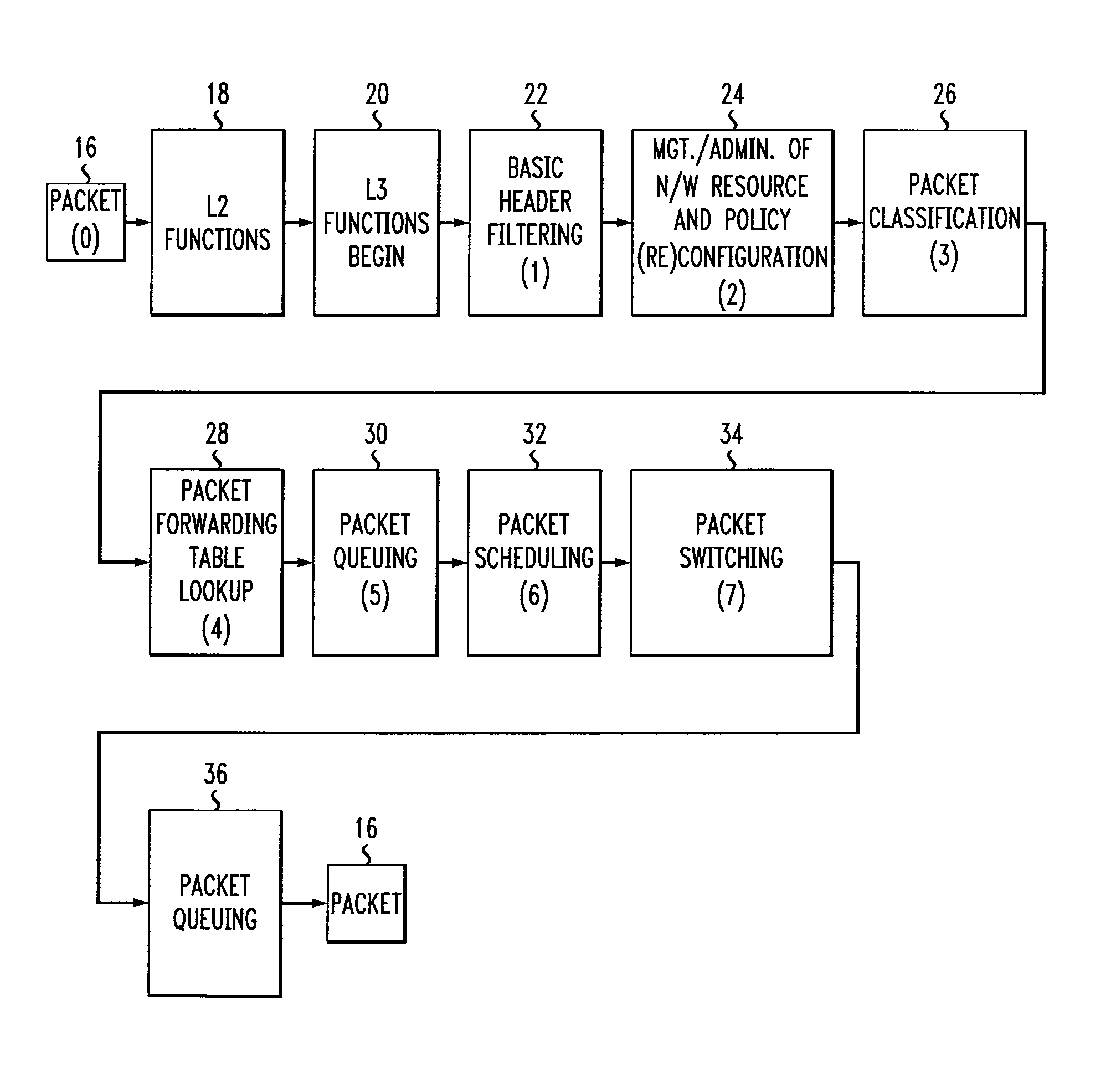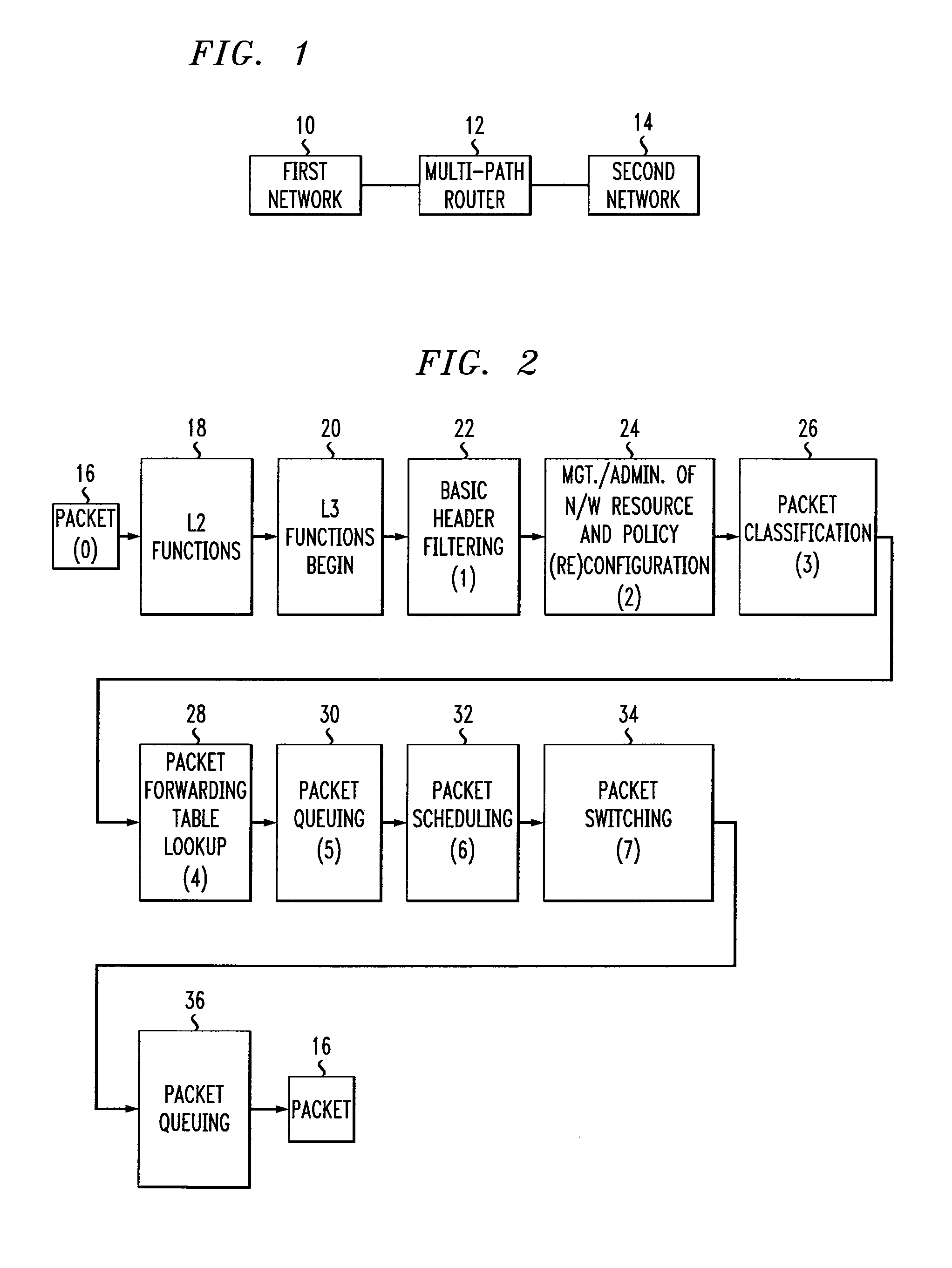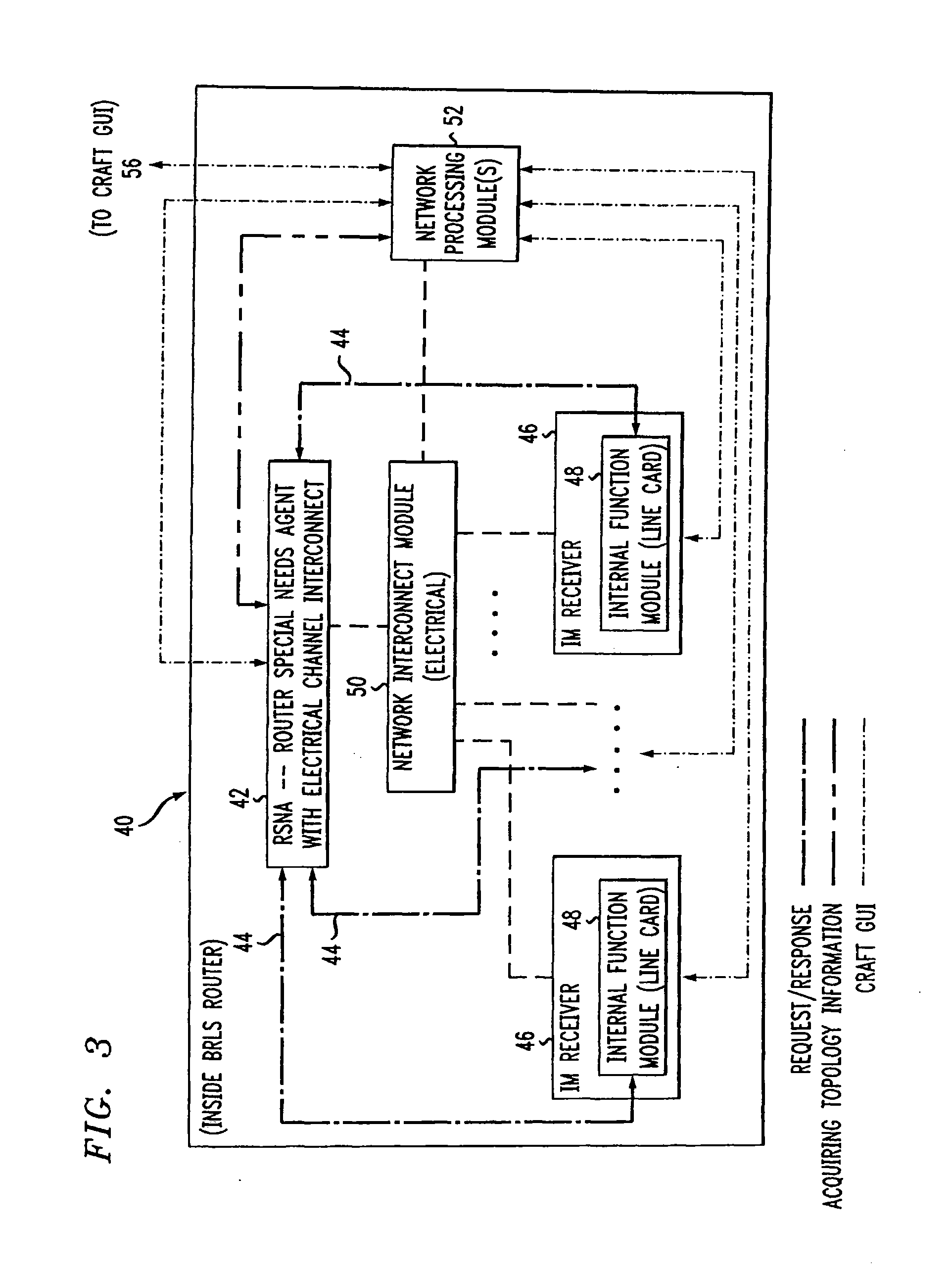The new routers also often need to be lab-tested to ensure
interoperability with existing hardware and
software, an often time-consuming effort before field deployment can be made possible.
However, it is not possible to add more I / O cards “
on demand” without a new switch fabric (SF) replacement if the capacity for target expansion were not already built into the router SF at its first implementation.
This is because capacity of most conventional router SFs (e.g.
bus or crossbar) cannot be easily expanded
on demand.
Moreover, the functionalities of “edge”, “hub” and “backbone” routers cannot be interchanged without also undertaking the time-consuming task of altering internal router hardware architectures required to adapt to the functionality of each router at the “target”
network layer.
Consequently, other routers in the network are typically not available as hardware resources to rapidly address
upgrade or expansion needs of the different
layers.
Also, if the
data path were originally pipelined, the pipeline would need redesign since some pipeline stages must be skipped (or taken out) due to the disabling of the above-mentioned hardware components.
Furthermore, such a pipeline modification may
impact and thereby induce a change in the router's
clock speed.
Furthermore, each of the above steps is labor-intensive and thus costly and time-consuming.
Hence,
upgrade of backbone routers using edge routers is rarely if ever done due to the labor and expense of hardware architectural alteration / re-work necessary
stemming from the completely different internal hardware designs for “edge” and “hub / backbone” routers in most vendor products.
Similarly, it is also labor-intensive to adapt a “backbone” or “hub” router today for use as an “edge” router as it would entail the reversal of a number of the tasks listed above.
Also, depending upon the desired target router hardware architectural implementation, the above-mentioned reconfiguration may also involve installing added databases and rewiring to accommodate added physical wires leading to the added databases / memories on a computer board, and if the packet-processing
data path was pipelined, the pipeline must be redesigned to accommodate additional stages of
database fetching / reading, making the pipeline longer and thus more complex, which could result in degradation of the overall performance of a router.
Another problem which occurs is that a capacity / speed conversion or
upgrade of an ISP network having multiple
layers of network hierarchy often involves putting together different vendor equipment for the different network
layers, as one vendor may not supply routers with different functionalities required for use in different layers of the network.
In such situations, lengthy and expensive network
interoperability testing and field (confidence) testing must be conducted for the different equipment from different vendors in the different network layers.
This results in a relatively long lead-time being required in the hardware expansion / upgrade process for all network layers.
Hence, since router hardware expansion / upgrades must often be done network-wide for all network layers to ensure
interoperability after the expansion / upgrade, the problem of costly and manpower intensive router hardware upgrades is exasperated with an increase in the numbers of network layers.
Another problem is that since IP QoS control is distributed in each individual router in conventional systems, only hop-by-hop non-optimal, instead of global, view of QoS control is possible.
With QoS control in its distributed form, conventional router hardware architectures cannot scale to include whole-path data storage capacity needed for network whole-path QoS provisioning within the router itself due to router size and / or central office space constraints, among other inefficiencies.
The reason being that to provision conventional routers with global knowledge for network whole-path-related QoS control would mean enormous expense since it would be necessary to equip each router with numerous built-in databases that yield such network-wide information.
Such provisioning is difficult to achieve within the limited space of a router
chassis and with equipment
footprint size restriction inside the limited space of a central office for routers.
Moreover, frequent and time-consuming synchronization of states amongst routers (often by message exchange in the form of a network protocol) is needed to ensure network-wide data / state coherence.
With the inability to scale efficiently to include whole-path data storage capacity needed for network-wide QoS provisioning, an individual router has no global view of the bandwidth resource for arbitrary routes in the network.
Consequently, it is highly inefficient for a router to provision value-added overall network-wide whole-path-related services such as IP-based VPN which involve routes elsewhere in the network the bandwidth resource status of which is not known to the router unless the router spends the time to “ask” for it via message exchange in the form of specific protocols.
In view of the above, it is clear that conventional router hardware architectures are not designed for cost- and manpower-efficient network hardware expansions or upgrades.
This approach results in the expenditure of large amounts of capital and manpower resources, as well as long hours of “costly”
downtime for all parties involved (e.g. ISPs and end users).
The conventional processes for performing a network hardware expansion or upgrade are cost-inefficient and manpower intensive.
Consequently, many companies (e.g. AT&T, Corp.) spend a tremendous amount of energy and resources in the process of network hardware expansions / upgrades.
 Login to View More
Login to View More  Login to View More
Login to View More 


